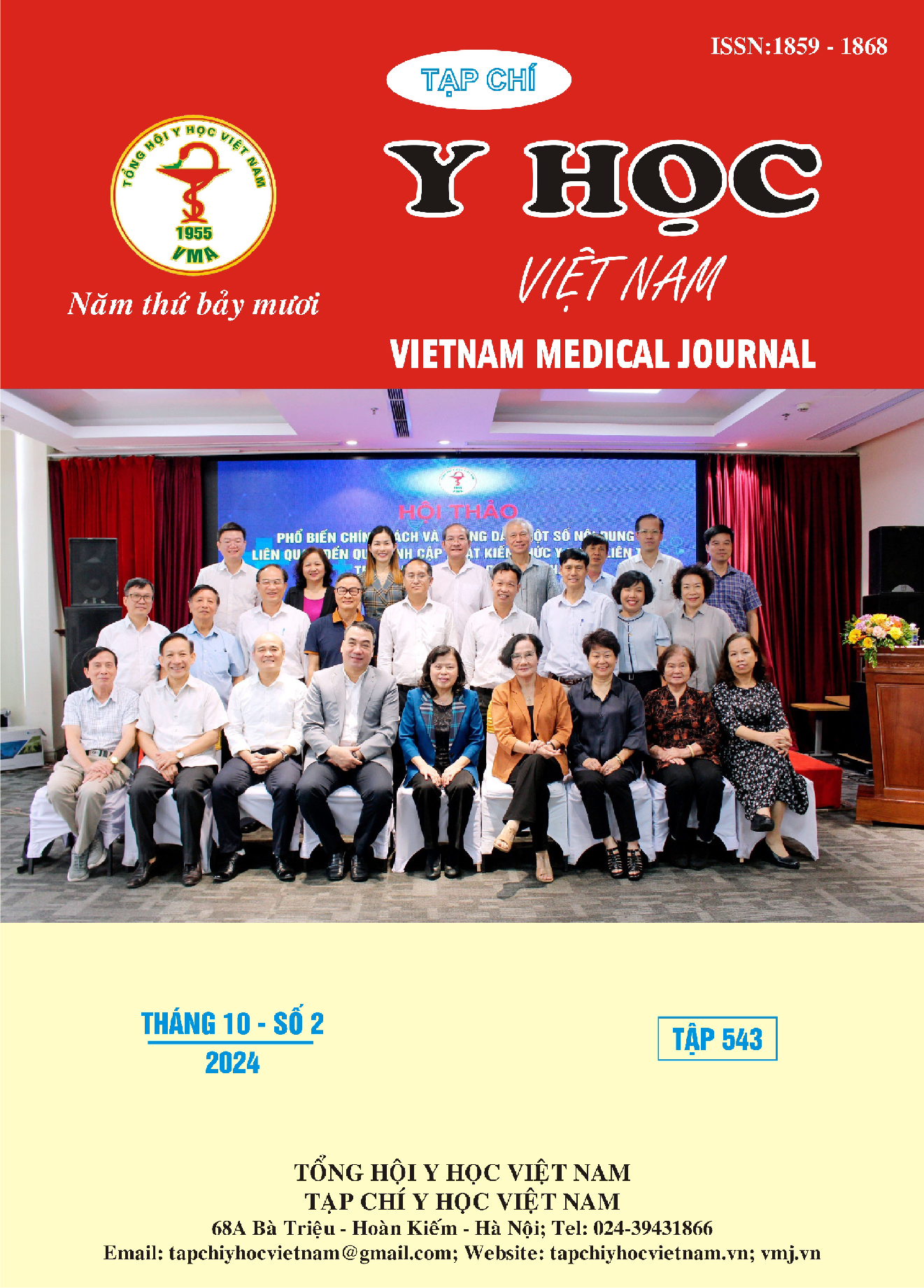EVALUATE THE RESULTS OF TREATMENT FOR ALLERGIC RHINITIS WITH HOUSE DUST MITE SUBLINGUAL IMMUNOTHERAPY
Main Article Content
Abstract
Objectives: Evaluate the results of treating allergic rhinitis with sublingual house dust mite immunotherapy. Methods: opinion overview. In this study, we used data on Pubmed and Google Scholar to search, screen related articles, analyze and evaluate the treatment results of sublingual immunotherapy for patients with allergic rhinitis are sensitive to house dust mites. Results: 18 eligible scientific studies were included in the review, over the last 10 years, of which 11 were randomized controlled clinical trials, 5 were prospective, and 2 were retrospective. describe each case with a total of 9319 patients. Sublingual immunotherapy was used in studies in different, standardized units: 10 studies used tablet form, 8 studies used drop form, treatment evaluation period from 12 to 48 months. 13 studies showed improvement in symptom score (SS) with p<0.05, 5 studies improved medication score (MS) P<0,05 6 studies found an improvement quality of life score (RQLQ) with p<0.05, 4 studies improved immune improvement, 15 studies evaluated the safety of SLIT. Conclusions: House dust mite sublingual immunotherapy is an effective treatment in reducing allergic rhinitis symptoms and patient's need for medication; improve quality of life and immune index; it is a safe treatment method for both adults and children with allergic rhinitis.
Article Details
Keywords
Allergic rhinitis, house dust mite, sublingual immunotherapy
References
2. Wise SK, Damask C, Roland LT, et al. International consensus statement on allergy and rhinology: Allergic rhinitis - 2023. Int Forum Allergy Rhinol. 2023;13(4):293-859.
3. Hoyte FCL, Nelson HS. Recent advances in allergic rhinitis. F1000Research. 2018;7:F1000 Faculty Rev-1333.
4. Canonica GW, Cox L, Pawankar R, Baena-Cagnani CE, et al. Sublingual immunotherapy: World Allergy Organization position paper 2013 update. World Allergy Organ J. 2014;7:6.
5. Spieksma FTM, Dieges PH. The history of the finding of the house dust mite. J Allergy Clin Immunol. 2004;113(3):573-576.
6. Camelo-Nunes IC, Solé D. Allergic rhinitis: indicators of quality of life. J Bras Pneumol Publicacao Of Soc Bras Pneumol E Tisilogia. 2010;36(1):124-133.
7. Roberts G, Pfaar O, Akdis CA, Ansotegui IJ, Durham SR. EAACI Guidelines on Allergen Immunotherapy: Allergic rhinoconjunctivitis. Allergy. 2018 Apr;73(4):765-798
8. Chen Y, Zhou L, Yang Y. Effect of sublingual immunotherapy on platelet activity in children with allergic rhinitis. Braz J Otorhinolaryngol. 2017 Mar-Apr;83(2):190-194.


